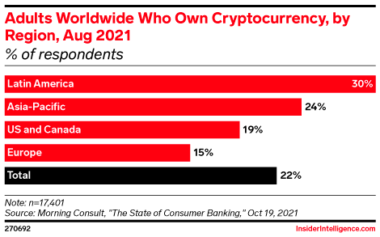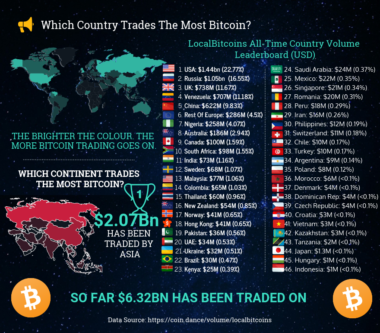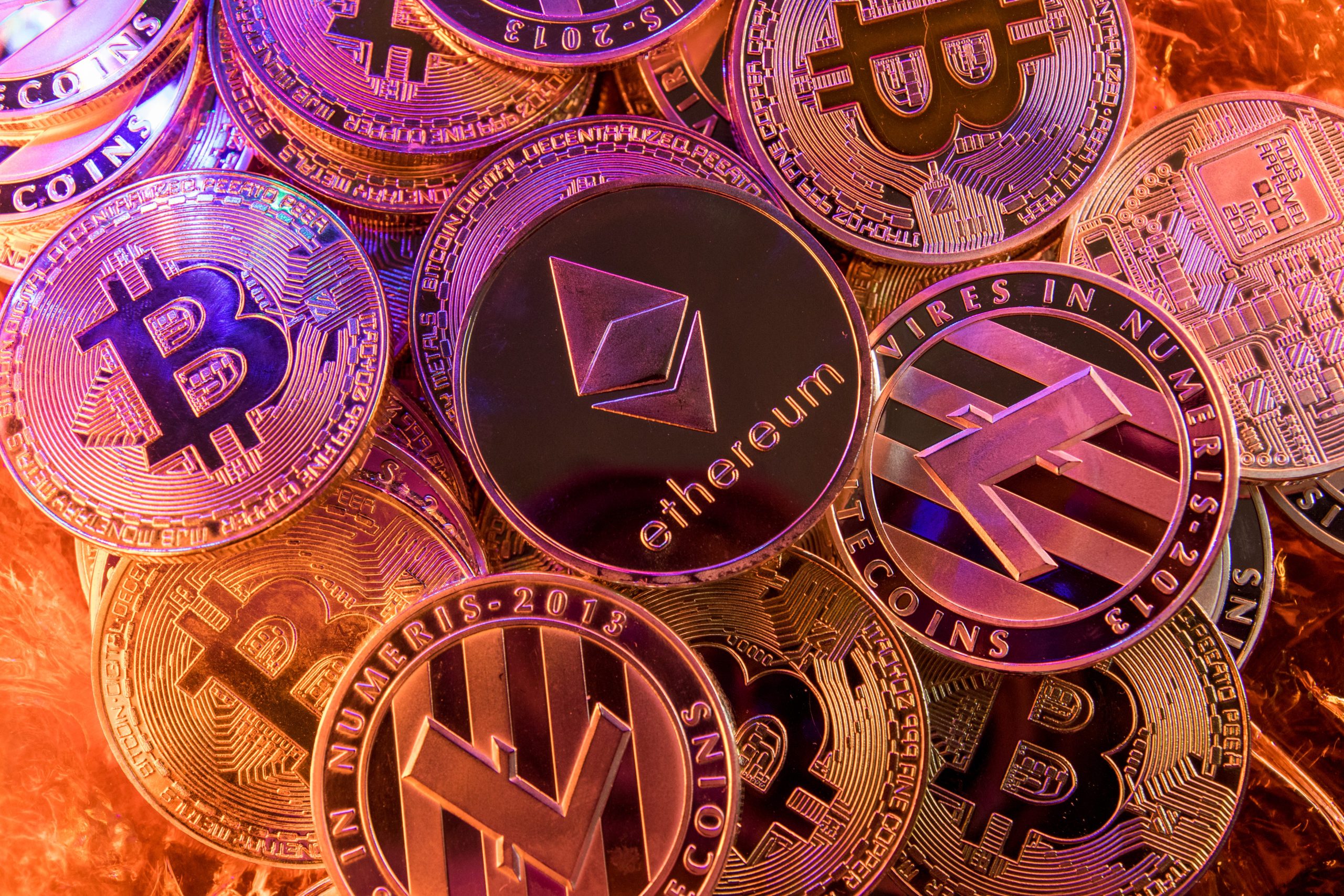How to Engage Global Crypto Audiences
Since the emergence of Bitcoin in 2009, the world of cryptocurrencies has seen explosive growth that has attracted the interest of investors worldwide. Parallel to the emergence of new currencies has been the establishment of a number of exchange platforms and ancillary services such as crypto wallets, cards and account management functionality.
The decentralized and online nature of the crypto market makes it particularly suitable for international expansion, resulting in a global crypto consumer base, with its own culture and language. With more players entering the market, including established financial brands, what should crypto scale-ups do to win international consumers?
Look beyond the usual markets for quick wins

When it comes to well-established international online industries such as retail, travel, hospitality and luxury goods, brands often prioritise entering mature. The US, UK, France, Germany, Canada and Japan are large markets composed of wealthy consumers who are accustomed to transacting online. Some of these markets are important crypto markets too, but they are also highly competitive to advertise and acquire new customers in.
APAC is the second largest region in terms of cryptocurrency ownership, but it is dominated by China whose crackdown on crypto sent prices tumbling at the end of last year, banning all trading and mining in the country. This makes advertising crypto brands a challenge. Latin America, on the other hand, leads the world in crypto ownership and can be significantly less costly to advertise there.

Lastly, another region often overlooked when seeking quick wins, is the Nordics. In these smaller, but affluent and technologically advanced markets, traders are looking to make high returns. Sweden, Norway and Denmark all over-index in terms of Bitcoin trading vs population.
Gain trust with authentic local content
As crypto investing has grown in popularity, multiple articles have been written to introduce consumers to the new and growing terminology surrounding the industry. Crypto platforms seeking to expand internationally by outsourcing content creation need content providers to know their HODLs from their Merkle trees. Copywriters and translators need enough crypto knowledge to understand briefs and source content in English before they can produce engaging copy for local audiences that builds trust and supports conversion. The challenge of producing great content is further increased as different languages evolve to cope with the new influx of terminology. There are four main approaches that are becoming increasingly blended:
Keeping certain terms in English
This approach is used where a term is very specific to crypto culture, rather than broader financial trading. For example “when lambo?” is a term used to speculate about when a cryptocurrency will become valuable enough that holders of it will be able to afford a Lamborghini- the luxury car brand associated with conspicuous new wealth. Even in English, the term alone means very little to somebody not familiar with crypto culture, so translating it is extremely difficult. As such it often works better to be left in English, as is the preference in Brazilian Portuguese.
Translating directly and adjusting for grammar
For more straightforward nouns that have a direct translation and can be understood alone, many markets choose to directly translate the term. For example, in Venezuela, “dolphin”, which means a mid-size crypto holder is directly translated as “delphin”. When it comes to verbs, it is common to see them conjugated to make sense in the grammar of the target language, such as “stakear” (to stake) used here on the Argentinian crypto exchange Buenbit.
Culturally nuanced localisation
French has a long history of protecting its language from the introduction of foreign words and is also trying to influence the development of vocabulary around crypto. The preference is to translate terms into French wherever possible. Currently, the officially recommended translation of cryptocurrency is “cybermonnaie”, which had a Google search volume of only 90 at the time of this research. However, the term with the most active use currently is “cryptomonnaie” or “crypto-monnaie”, with a search volume of 27,100. Choosing how close to stick to official terms can make a significant difference to brand visibility.
German takes a much more blended approach. In this article from Die Welt you can see examples of fully German terminology “Krypto-Alternativwährungen” and a partial borrowing from English “Cryptocoin-Börsengänge” in the same paragraph. Mixing English and German is increasingly common and acceptable even to major publishers.
Originating new terminology
With deep links to the founding of crypto technology, Japan has been fertile ground for bespoke vocabulary. For example, 昇竜拳 (shoryuken), which literally means “upper-cut” is a term often found in martial arts gaming, but is now also used in financial instrument terminology, particularly crypto, to mean a sudden rise in price.
A new vocabulary is also emerging in China, partly as a method to keep crypto activity out of sight from authorities, almost as a secret code. 割韭菜 (Gē jiǔcài), literally meaning “cutting leeks” has become a fashionable slang term in China to refer to newbie investors who lose money to more experienced traders. As leeks grow from the ground up, it implies a constant flow of naïve new crypto fans ready to be “harvested”.
Even the names of the most traded currencies have slang nicknames that are commonly used. For example, Dogecoin’s official translation is 多吉币, which is a phonetic transliteration of Doge (多吉 duōjí) and then the character for currency (币 bì). However, it is also often referred to as 狗狗币 gǒugǒu bì, meaning “doggy currency”, mirroring the logo and referencing the history of the coin’s name in English- a misspelling of dog.
Writing or translating effective crypto content for international markets is an expert task that has a direct impact on consumer trust and sales. Trading platform owners need to ask themselves if they would put their credit card details into a platform written in poor quality English. If the answer is no, then can they expect their international customers to trust a platform that has been hastily localised?
Apply a targeted localisation strategy, blended with digital expertise
Research shows that consumers are far more likely to transact on interfaces that have been translated into their local language, even when they themselves have a good command of English. This may seem obvious, but it presents a challenge to scaling brands that want to grow internationally but maintain control of localization budgets. However, localisation planning based on deep understanding of how international consumers behave across digital channels allows brands to gain the maximum impact from their local language budget.

For example, while each Latin American country has its own Spanish variant, it can also be more efficient to localise websites using a generic type of “Latam Spanish” to launch all markets in the region. Locaria’s Content Analysts in Mexico City, refer to sites from other Spanish-speaking countries in the region, such as Chile, when keeping up to date on crypto terminology, as so much of the language is shared. Then, if the business objectives and market preferences render it necessary, they can further tailor content to individual market nuances at a later stage.
For the Nordics, where localisation costs reflect the higher cost of talent in the region, it can be acceptable to launch with an English language website. Many consumers in the region have a good understanding of English, so feel comfortable transacting on an English site, but still search for products and services in their own language and respond better when scrolling if the ad content is localised. As such, it is much more effective to use localised paid media advertising, structured around local keywords to ensure visibility and drive traffic. Then, once demand is secured, further invest in broader localisation to improve conversion. This agile approach to localisation allows brands to build revenue and invest in local markets incrementally.
When it comes to deciding which marketing channels to localise, it is also key to understand the evolving local regulatory environment. Many markets are still establishing rules around paid advertising for cryptocurrencies and crypto exchanges. Canada, for example, has recently warned against gambling-style advertising for crypto, particularly on social media. For markets such as this, localisation is still key to drive trust and engagement with new brands, but it can be wiser to prioritise localisation of owned media assets and a strategy more closely focused on SEO and content marketing to ensure compliance.
In terms of SEO, there are often gains to be made in markets where crypto sites have already localised their surface content, but are yet to fully apply best practice SEO localisation. Actions such as embedding locally-researched keywords in the content, localising URLs, improving meta content and tagging will ensure optimum performance in the target market. YouTube, as the second-largest search platform globally, is also a key channel for investing in localisation, meaning dubbing or subtitling video content can support international engagement.
Keeping up with crypto
As the market for cryptocurrencies, platforms and exchanges continues to grow and many new entrants emerge, the race to dominate international markets will define the winners. Nuanced, targeted and high-quality localisation blended with digital marketing expertise is essential not only to drive traffic, but also to engender trust, support conversion, and finally achieve loyalty.
Language evolves, and this is particularly the case with crypto. To keep up with the changes and ensure visibility, using local grass-roots talent keeps content fresh, and ensures it ranks on key search and video channels. Locaria’s network of 1600 in-market linguists and content creators work with crypto and fintech brands to ensure they stay up-to-date, proactively finding content opportunities.
Takeaways
- Select new markets smartly to maximise competitive advantage and gain quick wins
- Gaining trust with international crypto fans requires high quality local content, where understanding terminology is key
- Localisation unlocks demand. Budgets can be managed through a targeted approach based on a blend of localisation and digital marketing expertise
Learn more about how Locaria can help you scale your content globally here.
Article by Lindsay Hong, COO of Locaria




